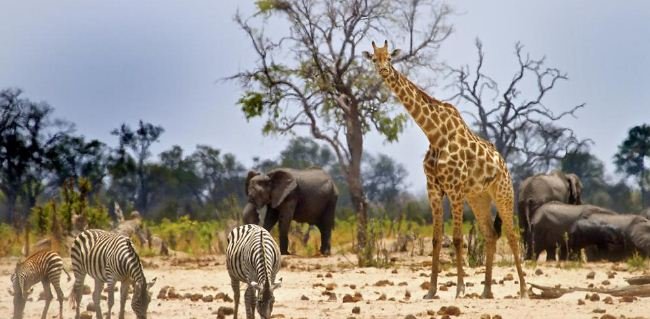The human being is causing a selective extinction of big mammals throughout the world, at a level that had not occurred for 66 million years, at the end of the Cretaceous, when the dinosaurs disappeared. This is what concludes an investigation led by the State University of New Mexico in Albuquerque (United States), which warns that, if the trend continues and all animals that are currently threatened are extinguished, within 200 years the cow will be the Largest mammal on the earth’s surface.
Researchers have analyzed how the size of terrestrial mammals has evolved in the last 125,000 years. According to published this week in the journal Science, they have reached the conclusion that there has been a selective extinction of large mammals on all continents, which began after the arrival of the human being in each region.
If the trend continues, within 200 years the cow will be the largest mammal on the Earth’s surface
125,000 years ago populated the globe the huge mammoths, woolly rhinoceroses, and saber-toothed tigers, of which only fossils remain. And already at that time, the human being had begun to diminish their populations: in Africa, the cradle of humanity, there were fewer large mammals than in the rest of the globe.
Between 80,000 and 60,000 years ago, the extinction also spread to Eurasia, when Neanderthals, Denisovans and later Homo sapiens spread across the continent. The same thing happened later in Australia, between 60,000 and 50,000 years ago, and in America, between 30,000 and 15,000 years ago.
North America is where the effect of human presence has been most dramatic. Before Homo sapiens crossed the Bering Strait, which joins what is now Russia with Alaska, the average weight of mammals on the continent was 98 kilos. Now, the average has been reduced to 7.6 kilos.
[wp_ad_camp_3]The researchers point to the human being as the sole responsible. The climate, which has a great influence on the survival of the species, has never caused such a selective extinction in mammals. “In the only moment in which the body size decreases, when the largest species on each continent die, it is when hominids are present,” explains Felisa Smith, lead author of the research. “So, we suspect that biased extinction by size is a hallmark of human activity, both past, and present,” argues Smith, who is a researcher at the State University of New Mexico.
In the only moment in which the body size decreases, when the largest species on each continent become extinct, it is when hominids are present “
Traditionally, it has probably been through hunting that our ancestors have challenged these large animals, especially herbivores, more showy and appetizing than smaller ones. “If you hunt a rabbit, maybe you can eat one day, but if you kill a mammoth, you can feed all your people,” says Felisa Smith. “In addition, they have slower reproduction rates, making it harder for populations to recover,” he adds.
The disappearance of large mammals can have effects on ecosystems on a global scale, the researchers warn. There can be “many influences on the biogeochemical cycles, changes in the structure and composition of the vegetation, ecological interactions with other animals, and can even affect the climate”, remarks Felisa Smith.
The disappearance of large mammals can have effects on ecosystems on a global scale
If the rate of extinction continues and all the species that are currently threatened disappear, in the next 200 years, between 23% and 54% of the mammals that were 125,000 years ago will have been lost. Currently, extinction is not as selective against large animals, as there are new threats, such as alteration of habitats, urbanization, the introduction of invasive predators, which also affect the smallest. But if the trend does not change, “the largest mammal on earth in a few hundred years could very well be the domestic cow,” the researchers write in Science. “I hope that does not happen, but it seems we are going in that direction,” laments Smith.
Source: https://www.theguardian.com/science/2018/apr/20/cow-could-soon-be-largest-mammal-left-due-to-human-activity-study-says
 MobiTechInfo
MobiTechInfo








